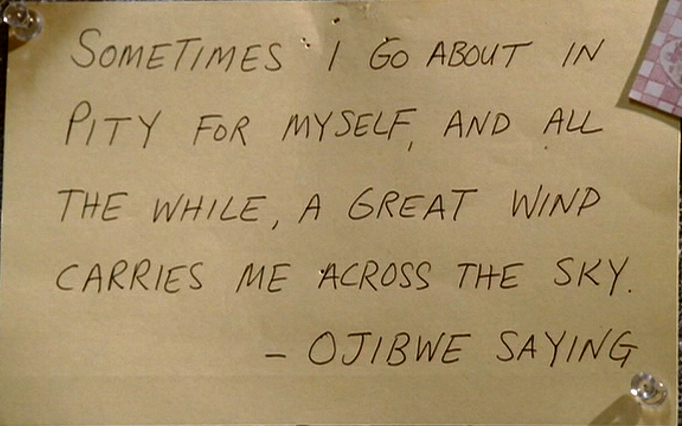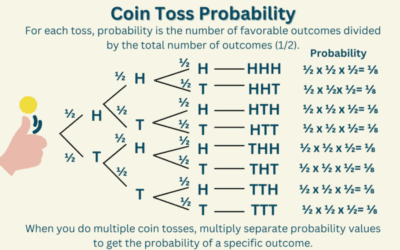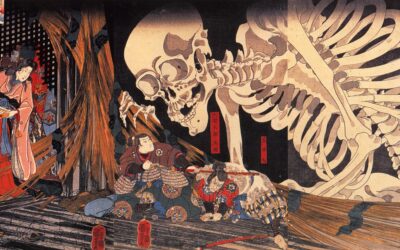
Carl, Whateva!
What if Tony Soprano had gone to a Jungian Analyst?
The Sopranos is one of my favorite shows. In fact I often re-watch it while I write these blog posts and so I decided to write some blog posts on the show itself. I have said before that I think the shows enduring popularity is a result of its ability to show the macrocosm of a power structure and the microcosm of the individual psychologies that inhabit it. There is just one problem. Over the years I have drifted more post Jungian in my therapeutic orientation. I have often wanted to intervene in the therapy sessions the show presents or yell my ideas at Dr. Meli during her consultation. Despite some references to Irvin Yalom the showrunner, David Chase, seems to exclusively looks to Freud and Zen Buddhism for his conceptions of psychology. I am not sure if Jung is in his ideological lexicon at all. I often wonder how some of the therapeutic arcs on the show that could have gone differently if Melfi took a more brain based medicine or a more Jungian conceptualization.
The big question under The Sopranos is whether or not people can change, and its conclusion is arguably that they don’t change very much. Throughout the series, Dr. Melfi engages Tony in traditional psychoanalytic talk therapy, which focuses on uncovering unconscious conflicts, childhood experiences, and repressed emotions usually based around misdirected sexual libido. However, as the show reveals, this approach proves largely ineffective for Tony due to his alexithymia – his inability to identify and process his emotions.
In Season 2 Episode 11 “House Arrest”, Dr. Melfi herself introduces the concept of alexithymia, comparing Tony to a shark that needs to keep moving to survive. She recognizes that Tony struggles to sit with and work through his feelings. Yet despite this insight, Melfi continues to engage Tony in a therapeutic modality that consistently overaroused his emotions without providing him the tools to effectively cope with them. After Melfi moves Tony out of his window of tolerance, we later see him discharge these heightened emotional states, that he cannot recognize or regulate, into hyper sexuality sex, gambling addiction and violence. Melfi repeatedly conceptualizes these behaviors as either part of the Freudian id or as an aspect of infantile and childhood sexuality, like any good Freudian.
Lacking the ability to mentalize and self-regulate, Tony invariably falls back on his habitual coping mechanisms, putting him in more crtisis states and more emotional disconnect. Talk therapy unearths Tony’s deep-rooted conflicts and pain, but without skills and strategies to manage this activated material, Tony is routinely overwhelmed by it and caught in repetitive, unhelpful patterns. Tonys pain and desperation seems to make Melfi panic also, making him more likely to double down on her Freudian psychoanalytic strategies.
In many ways, Dr. Melfi’s approach resembles exposure therapy for PTSD without first teaching self-soothing or grounding techniques – repeatedly activating traumatic states without a framework to integrate and resolve them. As her ex-husband points out in Season 3, psychoanalysis may simply be the wrong fit for someone with Tony’s presenting problems. Her consulting psychiatrist, Elliot Kupferberg, repeatedly asks her to send Tony to a “behaviorist”. Dr. Melfi goes so far as to mention it to Tony but never completes the referral out of her own attachment to him. Its unclear what kind of therapy these two Freudians are referencing but it is unlikely that Melfi is referring to someone she suspects to be a sociopath to behavioral conditioning. It is more likely that they are referring to Tony to cognitive behavioral therapy.
Tony likely would have been better served by a more behaviorist or skills-based approach like Cognitive Behavioral Therapy, which could have taught him concrete strategies to recognize his emotional triggers and de-escalate his nervous system arousal. Alternatively, a somatic or parts-based approach could have helped Tony develop embodied resources and cultivate a healthy internal dialogue with his fragmented psyche. But without such interventions, Tony is left raw and exposed session after session, inevitably turning back to his maladaptive habits to regain stability.
Nonetheless, Tony stays with Dr. Melfi for years despite the lack of tangible progress. In many ways, their dynamic replicates the dysfunctional attachment patterns of Tony’s upbringing. Melfi serves as a parental figure with whom Tony can act out his fierce need for and ambivalence about emotional connection. Her office becomes a holding space where Tony’s most vulnerable and traumatized parts can emerge – but without a fundamentally different approach, they remain unresolved, trapped in cycles of repetition.
This apparent therapeutic stalemate, however, serves the show’s purposes beautifully, allowing us to see the complex interplay of Tony’s psyche over time. Through the lens of this contentious and often unproductive treatment, The Sopranos invites us to ponder the limitations of certain psychological paradigms, the tenacity of trauma, and the all-too-human tendency to resist change even as we long for growth. While Dr. Melfi’s approach fails to significantly shift Tony’s behavior, it succeeds in illuminating the depths and intricacies of his character – and by extension, the human condition itself.
Alternatively, a somatic or parts-based approach could have helped Tony develop embodied resources and cultivate a healthy internal dialogue with his fragmented psyche. But without such interventions, Tony is left raw and exposed session after session, inevitably turning back to his maladaptive habits to regain stability.
Nonetheless, Tony stays with Dr. Melfi for years despite the lack of tangible progress. In many ways, their dynamic replicates the dysfunctional attachment patterns of Tony’s upbringing. Melfi serves as a parental figure with whom Tony can act out his fierce need for and ambivalence about emotional connection. Her office becomes a holding space where Tony’s most vulnerable and traumatized parts can emerge – but without a fundamentally different approach, they remain unresolved, trapped in cycles of repetition.
This apparent therapeutic stalemate, however, serves the show’s purposes beautifully, allowing us to see the complex interplay of Tony’s psyche over time. Through the lens of this contentious and often unproductive treatment, The Sopranos invites us to ponder the limitations of certain psychological paradigms, the tenacity of trauma, and the all-too-human tendency to resist change even as we long for growth. While Dr. Melfi’s approach fails to significantly shift Tony’s behavior, it succeeds in illuminating the depths and intricacies of his character – and by extension, the human condition itself.
However, while many commentators on the show’s depiction of therapy suggest that behaviorally conditioning someone into new habits to employ during emotional dysregulation would be sufficient, I would argue that truly resolving Tony’s issues would require healing his trauma at its roots. Parts-based therapies like Internal Family Systems (IFS), Voice Dialogue, Schema Therapy, and Process Therapy could help Tony develop a healthy relationship with his fragmented psyche, learning to compassionately witness and integrate his conflicting impulses and buried pain.
Similarly, somatic therapies like Brainspotting, Somatic Experiencing (SE), Sensorimotor Psychotherapy, and Gestalt Therapy could help Tony reconnect with and process the overwhelming emotions and sensations that fuel his trauma responses. By gently titrating his exposure to activated states and teaching embodied strategies for self-regulation, these approaches could help Tony develop a wider window of tolerance for difficult experiences and a more integrated sense of self.
Lets look at some other paths the shows therapy could have gone down.

Jungian Perspective on The Sopranos:
From a Jungian perspective, Tony’s relationships with his mother, Livia, and his therapist, Dr. Melfi, are deeply influenced by his anima – the unconscious feminine within his psyche. Livia, as a negative mother figure, has significantly impacted Tony’s anima development. Her emotional coldness, manipulation, and the constant threat of abandonment have left Tony with a wounded and underdeveloped anima, which manifests in his tumultuous relationships with women.
With Dr. Melfi, Tony projects his anima in both its positive and negative aspects. On one hand, he sees her as a nurturing, understanding figure – the “good mother” he never had. He longs for her approval and validation, seeking in her the unconditional love he craved from Livia. On the other hand, he also projects onto Melfi the more negative aspects of his anima – the controlling, castrating, and rejecting qualities he associates with his mother. This projection leads to moments of hostility, paranoia, and the fear that Melfi will ultimately betray or abandon him.
Tony’s relationships with his mistresses also reflect his anima projections. He is drawn to strong, independent women like Gloria Trillo and Valentina La Paz, who embody the fiery, passionate aspects of his anima. However, he also tends to idealize these women, seeing them as the perfect nurturing figures he longs for. When they inevitably fail to live up to this idealized image, Tony experiences a sense of betrayal and rage, often leading to destructive and abusive behavior. This pattern reflects Tony’s own inability to integrate the opposing aspects of his anima – the nurturing and the destructive, the saintly and the sexual.
Tony’s relationships with his children, Meadow and AJ, are also colored by his own unlived potential. Meadow’s academic success and entry into the professional world trigger both pride and resentment in Tony. On one hand, he is proud of her accomplishments and her ability to navigate a world he never had access to. On the other hand, her intellectual pursuits and cultural sophistication also stir up feelings of inadequacy and anger in Tony, who feels excluded and looked down upon by the very world his daughter is embracing.
With AJ, Tony sees a reflection of his own vulnerabilities and perceived weaknesses. AJ’s lack of motivation, his sensitivity, and his struggles with mental health all trigger a deep sense of shame and frustration in Tony. He pressures AJ to embrace traditional masculine pursuits like football and military school – opportunities Tony himself never had – but AJ’s resistance to these paths only amplifies Tony’s own sense of failure and inadequacy as a father. Tony’s aggressive attempts to toughen up AJ can be seen as a projection of his own shadow, the parts of himself he deems unacceptable and tries to disavow.
Throughout the series, there are moments where Tony catches glimpses of the Self, the Jungian concept of the divine inner core. In his peyote trip in the desert, Tony experiences a profound sense of interconnectedness and oneness with the universe. For a moment, his ego defenses drop away and he accesses a state of transcendent wholeness. Similarly, in rare moments of stillness and beauty – like watching the sunset over the ocean – Tony taps into a sense of contentment and peace that hints at the Self’s presence.
However, these glimpses are often fleeting, as Tony’s persona – his mask of toughness and control – reasserts itself. The vulnerability and surrender required to fully embrace the Self are deeply threatening to Tony’s ego, which has built itself around a need for dominance and self-sufficiency. As a result, Tony’s spiritual yearnings and his moments of transcendence are often followed by a return to his old patterns of behavior, a retreat into the familiar defenses of his persona.
From a Jungian view, Tony’s journey is ultimately one of individuation – the lifelong process of integrating the various aspects of the psyche and aligning with the Self. While Tony’s therapy with Dr. Melfi provides a space for this exploration, his resistance to vulnerability and change often hinders more profound transformation. Nevertheless, his encounters with the numinous, his glimpses of wholeness, and his struggles to reconcile the opposing forces within his psyche all reflect the archetypal journey of the hero – the individual striving towards greater consciousness and authentic selfhood in the face of tremendous internal and external obstacles.
Cognitive Behavioral Perspective on The Sopranos:
From a Cognitive Behavioral Therapy (CBT) perspective, Tony’s emotional and behavioral patterns are largely influenced by his thoughts and beliefs, which have been shaped by his experiences, particularly his early relationship with his mother, Livia.
Livia’s parenting style, characterized by emotional manipulation, criticism, and a lack of warmth, has likely contributed to the development of several core beliefs in Tony. These might include ideas such as “I am unlovable,” “The world is a dangerous and untrustworthy place,” and “I must be tough and in control to survive.” These core beliefs, in turn, give rise to a range of automatic thoughts – the stream of cognitive content that arises in response to specific situations and triggers.
For example, when faced with a challenge to his authority as a mob boss, Tony might have automatic thoughts like “I’m weak if I don’t assert my power” or “If I don’t control this situation, everything will fall apart.” These thoughts then drive his emotional and behavioral responses, leading to anger, aggression, and violent outbursts as a means of reasserting control and protecting his vulnerable sense of self.
Similarly, Tony’s panic attacks can be understood through the lens of his automatic thoughts. When in a situation that triggers feelings of vulnerability or loss of control, Tony might have thoughts like “I’m trapped” or “I’m having a heart attack.” These catastrophic interpretations of his physical symptoms and the situation at hand fuel his anxiety and panic, leading to a vicious cycle of physiological arousal and distressing cognitions.
In therapy, a CBT approach would focus on helping Tony identify and challenge these problematic thoughts and beliefs. This might involve techniques like cognitive restructuring, where Tony learns to recognize the distortions in his thinking (such as all-or-nothing thinking, catastrophizing, or overgeneralization) and develop more balanced and adaptive ways of interpreting his experiences.
For instance, when Tony has the thought “I’m weak if I don’t assert my power,” he could be encouraged to examine the evidence for and against this belief, consider alternative interpretations, and generate a more nuanced perspective, such as “Asserting my power aggressively might make me feel strong in the moment, but it also creates more problems in the long run. Real strength involves knowing when to be assertive and when to be flexible.”
CBT would also focus on helping Tony develop healthier coping strategies for managing his emotions and stress. This could include relaxation techniques like deep breathing or progressive muscle relaxation to counteract his physiological arousal during panic attacks. It might also involve behavioral interventions, such as exposure therapy, where Tony gradually confronts the situations he fears (like loss of control) in a safe and controlled manner, learning that he can tolerate and manage these experiences without resorting to aggression or avoidance.
Throughout treatment, the goal would be to help Tony recognize the connections between his thoughts, emotions, and behaviors, and to equip him with the tools to modify these patterns in service of his well-being and his goals. By challenging his distorted beliefs about himself, others, and the world, and by developing a repertoire of effective coping strategies, Tony could begin to break free from the cycle of emotional reactivity and maladaptive behavior that has defined much of his life.
This process would likely be gradual and iterative, as many of Tony’s beliefs and patterns are deeply entrenched and serve important protective functions. The therapeutic relationship would be crucial in providing a safe and supportive context for Tony to explore and modify these longstanding ways of being. Over time, as Tony gains insight into his cognitive processes and develops new skills for managing his thoughts and emotions, he may begin to experience greater emotional regulation, more adaptive interpersonal dynamics, and a more integrated sense of self.
A Somatic Experiencing Perspective on The Sopranos:
From a Somatic Experiencing (SE) perspective, Tony’s emotional and behavioral challenges are rooted in his body’s survival responses to overwhelming stress and trauma. SE posits that when the nervous system is overwhelmed and unable to complete its natural defensive responses (fight, flight, or freeze), the excess energy becomes trapped in the body, leading to a wide range of physical, emotional, and cognitive symptoms.
In Tony’s case, his early experiences with his mother, Livia, likely created a chronic state of hyperarousal in his nervous system. Livia’s unpredictable and often threatening behavior kept Tony in a constant state of vigilance, ready to defend against the next attack. However, as a child, Tony had little ability to fight back or flee from these overwhelming situations. As a result, his nervous system may have defaulted to a freeze response, collapsing in the face of an inescapable threat.
Over time, these survival responses become deeply ingrained in Tony’s physiology, shaping his reactions to stress and perceived threats. His panic attacks, for instance, can be understood as his nervous system’s attempt to discharge the excess energy of a thwarted flight response. The physical sensations of a racing heart, tightness in the chest, and feelings of impending doom are all manifestations of this incomplete defensive response.
In therapy, an SE practitioner would focus on helping Tony develop greater awareness of his bodily sensations and the underlying survival responses they represent. This process, known as titration, involves gradually and safely guiding Tony to notice and track the physical sensations, impulses, and emotions that arise in response to stressors.
For example, when discussing a confrontation with a rival mobster, the therapist might ask Tony to notice any tension, tightness, or other sensations in his body. As Tony tunes into these sensations, the therapist would help him to stay present with the experience, encouraging him to observe the sensations without judgment. The therapist might ask guiding questions like, “What do you notice in your body as you talk about this? Is there any impulse or movement that wants to happen?”
As Tony becomes more aware of his somatic experiences, the therapist would support him in gently experimenting with completing any thwarted defensive responses in a safe and controlled way. For instance, if Tony notices a tension in his legs and a feeling of wanting to run, the therapist might have him engage in a small, mindful movement that simulates running, like gently jogging in place. By allowing the body to complete these defensive responses in a titrated way, the excess energy can be discharged, and the nervous system can return to a more regulated state.
Over time, this process of tracking and discharging helps to build Tony’s capacity for self-regulation and resilience. By learning to notice and respond to his body’s subtle cues, Tony can interrupt his habitual patterns of hyperarousal and reactivity. He develops a greater sense of safety and control, knowing that he can handle the sensations and impulses that arise without becoming overwhelmed.
This somatic work would likely be integrated with cognitive and emotional processing, helping Tony to make connections between his physical experiences, his thoughts and beliefs, and his past traumas. However, the primary focus would remain on the bodily level, trusting that as Tony’s nervous system becomes more regulated, his cognitive and emotional symptoms will also begin to resolve.
From an SE perspective, Tony’s journey is one of learning to befriend and listen to his body, honoring the wisdom of his survival responses while gently guiding them towards greater balance and adaptability. By working with the body’s innate capacity for self-regulation, SE offers a path towards deeper resilience and a more embodied sense of self.
Parts-Based Perspective on The Sopranos:
From a parts-based perspective, Tony’s psyche can be understood as a complex system of subpersonalities, each with its own unique set of beliefs, emotions, coping mechanisms, and unmet needs. These parts often develop in childhood as a way of protecting the individual from overwhelming experiences and ensuring their survival. However, when these parts become rigid and extreme in their roles, they can lead to significant distress and dysfunction.
In Tony’s case, his early experiences with his mother, Livia, likely gave rise to several key parts. From a Schema Therapy perspective, these parts might be conceptualized as modes, which are clusters of schemas (core beliefs), coping strategies, and emotional states that become activated together. Some of Tony’s primary modes might include:
The Angry/Aggressive Protector:
This part emerges to defend Tony against perceived threats or humiliations. It is quick to rage, uses intimidation and violence to assert control, and keeps others at a distance to prevent vulnerability. This mode likely developed to protect Tony from his mother’s attacks and manipulations.
The Detached Protector:
This part helps Tony to disconnect from his emotions and needs, allowing him to function in high-stress situations without becoming overwhelmed. It is cynical, mistrustful, and keeps Tony isolated from genuine connection. This mode may have emerged to cope with the lack of emotional attunement and safety in Tony’s early environment.
The Vulnerable Child:
This part holds the deep pain, fear, and longing for love that Tony experienced in his relationship with his mother. It is the part of him that feels helpless, abandoned, and fundamentally unlovable. This mode is often exiled, pushed out of Tony’s conscious awareness because the emotions it carries feel too threatening.
The Punitive Parent:
This part has internalized the critical, demeaning voice of Tony’s mother. It constantly berates Tony for his weaknesses and mistakes, driving him to be harsh and unrelenting with himself and others. This mode perpetuates the cycle of shame and self-loathing that Tony experienced in childhood.
In therapy, a Schema Therapist would work to help Tony identify and understand these different modes. This would involve empathic exploration of each mode’s origins, its protective intentions, and the unmet needs and core beliefs that fuel it. The therapist would also guide Tony to notice how these modes become activated in his daily life and the impact they have on his relationships and well-being.
A key intervention in Schema Therapy is chairwork, a technique where Tony would be guided to dialogue with his different modes by speaking from various chairs representing each part. For instance, Tony might speak from the Angry Protector mode about its role in keeping him safe, then switch to the Vulnerable Child mode to express the hurt and fear beneath the anger. The therapist would facilitate this dialogue, helping each mode to feel heard and understood.
Over time, the goal would be to help Tony’s Healthy Adult mode (his wise, compassionate, and integrated self) to develop and strengthen. The therapist would coach Tony to respond to his distressed or extreme modes from this Healthy Adult perspective, offering validation, setting boundaries, and meeting unmet needs. For example, when the Punitive Parent mode becomes active, Tony’s Healthy Adult might respond with statements like, “I know you’re trying to protect me from making mistakes, but your criticism is only making me feel worse. I need to learn to be kind and patient with myself.”
From an Internal Family Systems (IFS) parts based perspective, the therapy process would be similar, with a focus on helping Tony to develop Self-leadership – the capacity to bring curiosity, compassion, and clarity to his relationships with his parts. The IFS therapist would guide Tony to get to know each part, understand its role in his system, and appreciate its efforts to protect him. As Tony builds trust with his parts, the therapist would support him in unburdening them from the extreme beliefs and emotions they carry from his past traumas.
For instance, in working with the Vulnerable Child part, an IFS therapist might guide Tony to witness this part with compassion, asking it what it needs to feel safe and loved. As the part shares its fears and longings, Tony, from his Self, could offer reassurance, validation, and a commitment to meet its needs in healthy ways. This process of inner attunement and care taking can be deeply transformative, allowing Tony’s parts to relax their extreme roles and trust his Self to lead. Maybe with help Tony could of come to see the ducks from the first episode as a symbol for his authentic and vulnerable self that he was out of touch with. Perhaps symbols from the show like ducks, visions of maternal women figures, or even deli meat that Melfi interprets in a Freudian way could have been used in parts based therapies to represent part of Tony’s psyche and help him understand his relationship to those parts.
Throughout this parts-based work, the therapist would also attend to the somatic and relational aspects of Tony’s experience. Noticing how different modes or parts manifest in Tony’s body, facial expressions, and tone of voice can provide valuable information and opportunities for intervention. The therapeutic relationship itself serves as a corrective emotional experience, with the therapist modeling compassion, attunement, and healthy boundaries.
Read another article on the Sopranos: The Sopranos as an Analysis of the Psychology of Empire






















0 Comments